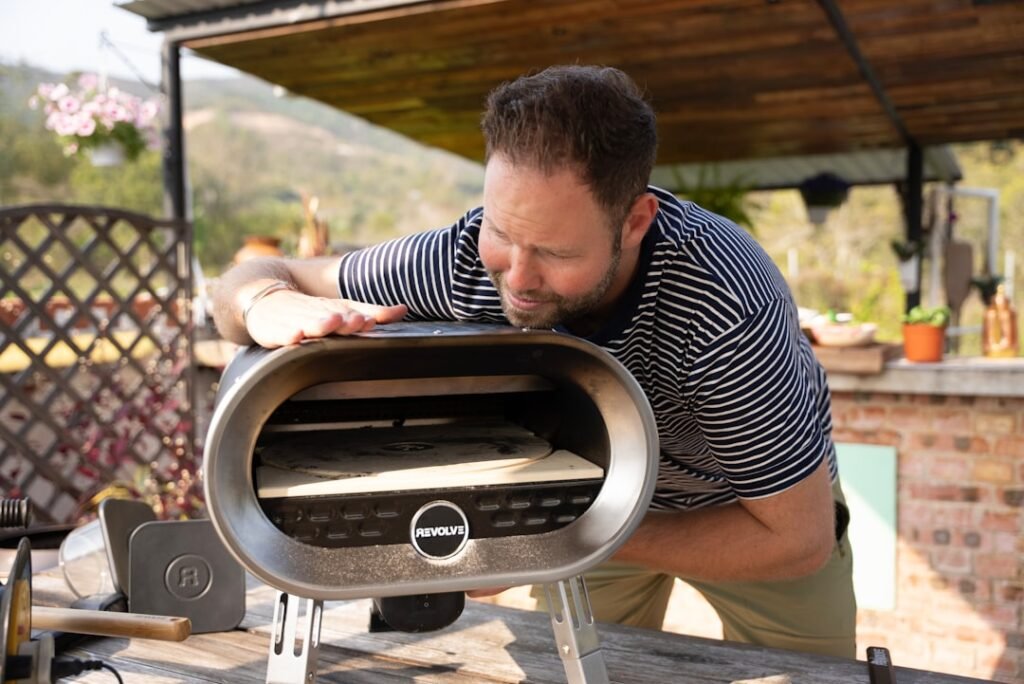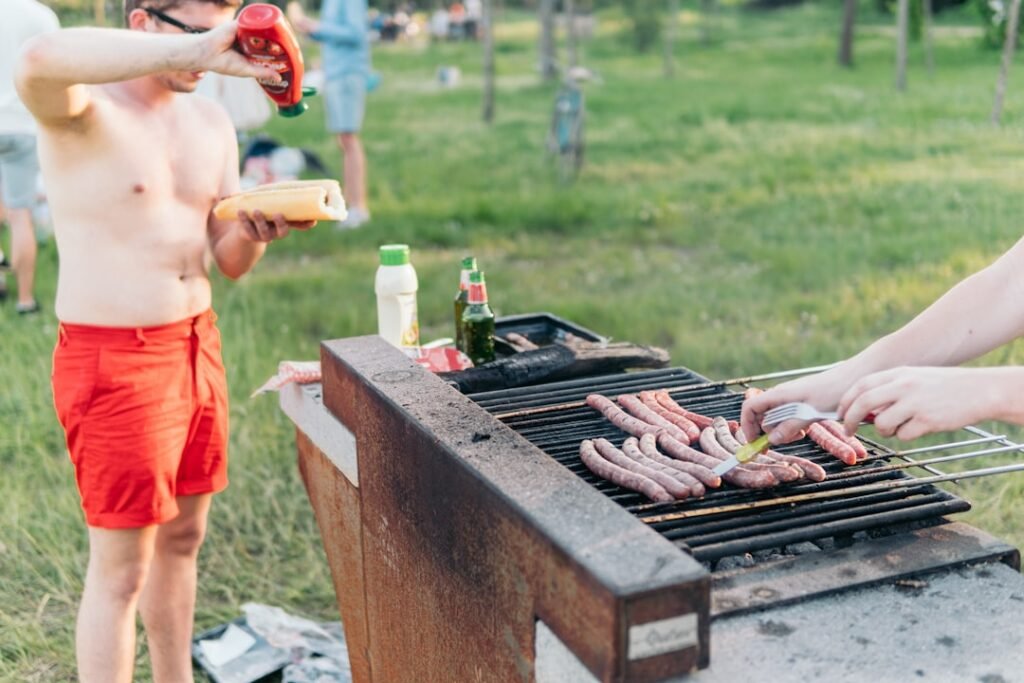Mastering the Art of Smoking BBQ Brisket at Home

When it comes to preparing a mouthwatering brisket, the first step is selecting the right cut. Brisket is a cut of meat from the breast or lower chest of beef, and it is typically divided into two main sections: the flat and the point. The flat is leaner and more uniform in shape, making it ideal for slicing.
On the other hand, the point is thicker and contains more marbling, which contributes to its rich flavor and tenderness when cooked properly. Personally, I find that choosing a whole packer brisket, which includes both the flat and the point, offers the best of both worlds. This cut not only provides a variety of textures but also allows for a more dynamic flavor profile.
In addition to considering the cut itself, I also pay attention to the quality of the meat. When shopping for brisket, I look for a well-marbled piece with a good amount of fat cap on top. The fat is essential for keeping the meat moist during the long cooking process, and it also adds flavor.
I often seek out USDA Choice or Prime grades, as these cuts tend to have superior marbling and tenderness. If possible, I also prefer to buy my brisket from a local butcher or specialty meat shop, where I can ask questions about the source and handling of the meat. This attention to detail in selecting the right brisket cut sets the foundation for a successful smoking experience.
Preparing the Brisket for Smoking
Once I have chosen my brisket cut, the next step is preparation. This involves trimming the fat cap and removing any excess silver skin or hard fat that could hinder the cooking process. I usually leave about a quarter-inch of fat on top, as this will render down during cooking and baste the meat, keeping it juicy and flavorful.
Trimming can be a bit daunting at first, but with practice, I’ve learned to make clean cuts that enhance the overall presentation of the brisket. After trimming, I like to give my brisket a good wash under cold water and pat it dry with paper towels. This step helps remove any residual blood or impurities that may affect the flavor.
Once dried, I apply a binder—usually mustard or olive oil—to help my rub adhere better to the meat. The binder doesn’t impart much flavor but serves as a base for my seasoning blend. I then generously coat the brisket with my chosen rub, ensuring that every inch is covered.
This process not only adds flavor but also creates a beautiful bark during smoking. I often let the seasoned brisket sit in the refrigerator for several hours or even overnight to allow the flavors to penetrate deeply into the meat.
Selecting the Best Wood for Smoking

The choice of wood for smoking is crucial in determining the final flavor profile of my brisket. Different types of wood impart distinct flavors, and I’ve experimented with various options over time. For brisket, I find that hardwoods like oak, hickory, and mesquite work particularly well.
Oak provides a mild yet robust flavor that complements the beef without overpowering it. Hickory offers a stronger smoke flavor that can add depth to the meat, while mesquite delivers an intense smokiness that some people love but can be overwhelming if used excessively. I also enjoy blending different types of wood to create a unique flavor profile.
For instance, mixing hickory with applewood can yield a balanced sweetness that enhances the natural flavors of the brisket. When selecting wood, I always opt for seasoned hardwood rather than green wood or softwoods, as these can produce undesirable flavors and excessive creosote buildup. Additionally, I prefer using wood chunks or logs instead of chips, as they burn more slowly and provide a longer-lasting smoke.
Ultimately, my choice of wood plays a significant role in crafting that perfect smoky flavor that makes my brisket truly unforgettable.
Mastering the Low and Slow Cooking Technique
| Technique | Benefits |
|---|---|
| Low and Slow Cooking | Results in tender and flavorful meat |
| Requires patience | Allows for collagen breakdown and development of rich flavors |
| Best for tough cuts of meat | Transforms them into succulent dishes |
The hallmark of great brisket is mastering the low and slow cooking technique. This method involves cooking the meat at low temperatures over an extended period, allowing collagen in the connective tissues to break down and transform into gelatin. This process results in tender, juicy meat that practically melts in your mouth.
I typically aim for a cooking temperature between 225°F and 250°F (107°C to 121°C), which allows for optimal smoke absorption while ensuring even cooking. To achieve this low-and-slow environment, I use a combination of indirect heat and smoke in my smoker. I place the brisket on one side of the grill while keeping the heat source on the opposite side.
This setup allows for gentle cooking without direct exposure to flames. Throughout this process, patience is key; I often find myself checking on my brisket every hour or so to ensure everything is running smoothly. The total cooking time can vary significantly depending on the size of the brisket, but I generally plan for about 1 to 1.5 hours per pound.
It’s essential to resist the urge to rush this process; good things come to those who wait!
Using the Right Seasonings and Rubs
Seasoning is an integral part of creating delicious BBQ brisket, and I take great care in crafting my rubs. While some purists advocate for a simple salt-and-pepper blend, I enjoy experimenting with various spices to enhance the flavor profile further. My go-to rub typically includes kosher salt, freshly cracked black pepper, garlic powder, onion powder, and a touch of paprika for color and sweetness.
This combination strikes a perfect balance between savory and slightly sweet flavors. I also like to customize my rubs based on personal preferences or seasonal ingredients. For instance, during summer months, I might add some brown sugar for caramelization or even experiment with chili powder for an extra kick.
Regardless of what I choose, I always ensure that my rub is applied generously and evenly across all surfaces of the brisket. The seasoning not only enhances flavor but also contributes to forming that coveted bark during smoking—a delicious crust that adds texture and depth to each bite.
Monitoring and Maintaining the Smoker Temperature

Maintaining consistent smoker temperature is crucial for achieving perfectly cooked brisket. Fluctuations in temperature can lead to uneven cooking and affect tenderness. To keep things steady, I invest in a reliable digital thermometer that allows me to monitor both the internal temperature of the brisket and the ambient temperature inside my smoker simultaneously.
This way, I can make adjustments as needed without constantly opening the smoker door. I also pay close attention to airflow within my smoker; proper ventilation helps regulate temperature and smoke levels effectively. If I notice that my smoker is running too hot, I adjust vents accordingly or add more water to my water pan if applicable.
Conversely, if it’s running too cool, I might add more fuel or adjust airflow to increase heat output. Throughout this process, patience remains paramount; it’s essential not to open the smoker too frequently as this can cause heat loss and extend cooking time unnecessarily.
Resting and Slicing the Brisket
After hours of careful smoking, there’s nothing quite like pulling that beautifully cooked brisket from the smoker. However, before diving into slicing it up, resting is an essential step that should never be overlooked. Resting allows juices within the meat to redistribute evenly throughout each slice rather than spilling out when cut into immediately after cooking.
I typically let my brisket rest for at least an hour wrapped in butcher paper or foil in a cooler or insulated container. Once rested, it’s time to slice! The way I slice my brisket can significantly impact its texture and presentation.
I always make sure to slice against the grain; this means cutting perpendicular to the direction of muscle fibers rather than parallel. Slicing against the grain shortens those fibers, resulting in more tender bites that are easier to chew. For flat cuts, I aim for about a quarter-inch thickness; for point cuts, I might go slightly thicker due to their richer marbling.
Tips for Perfecting Your BBQ Brisket at Home
Perfecting BBQ brisket at home takes practice and patience, but there are several tips I’ve gathered along my journey that can help elevate anyone’s smoking game. First and foremost, investing in quality equipment pays off immensely; whether it’s a reliable smoker or high-quality thermometers, having dependable tools makes all the difference in achieving consistent results. Another tip is to embrace experimentation!
While there are traditional methods and recipes out there, don’t be afraid to try new techniques or flavors that resonate with you personally. Whether it’s adjusting your rub recipe or experimenting with different wood combinations, finding what works best for your palate can lead to delightful discoveries. Lastly, remember that every cook is an opportunity to learn something new—don’t be discouraged by setbacks!
Each brisket teaches me something valuable about timing, temperature control, or flavor balance that helps refine my skills over time. With dedication and practice, anyone can master BBQ brisket at home and impress family and friends with their culinary creations!






